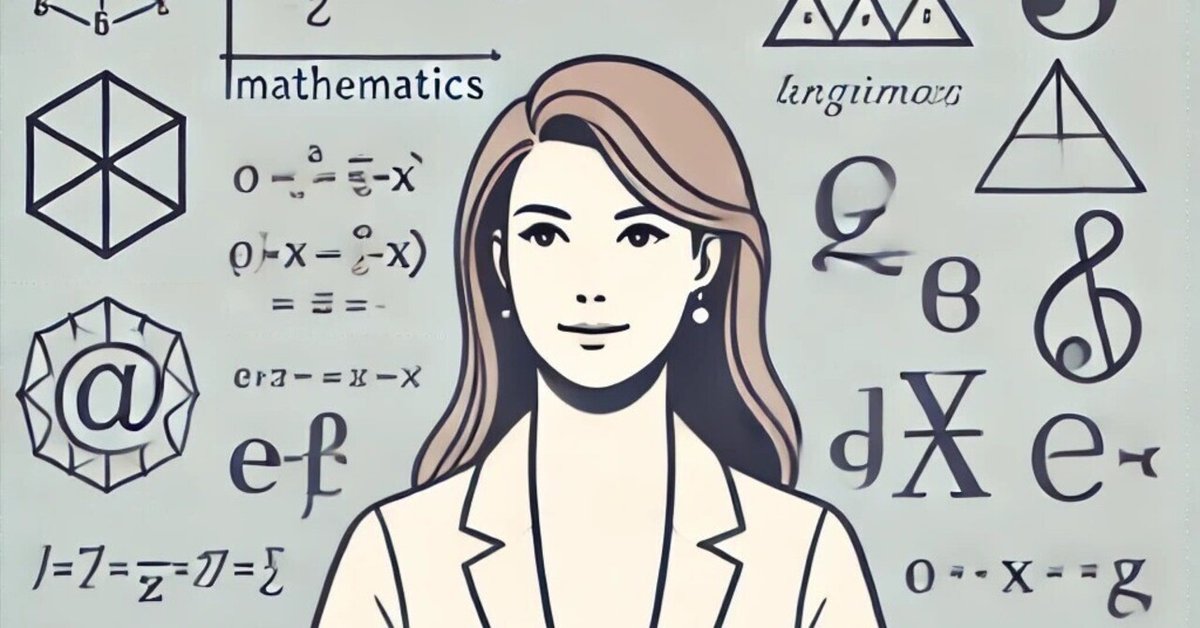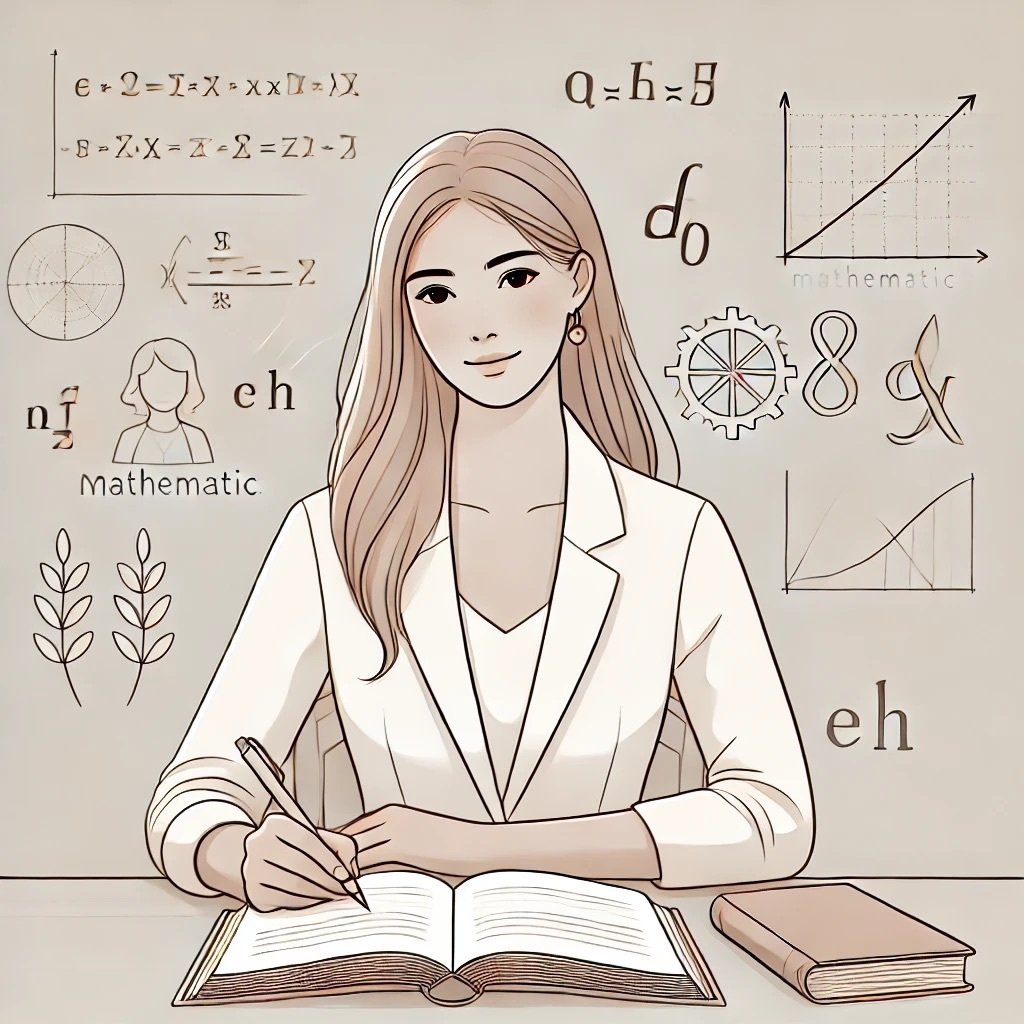
3行で読む「数学と語学」
1. 3行で読む「数学と語学」

1.1. 本書の情報と1行サマリー
タイトル: 数学と語学
著者: 寺田寅彦
出版社: 岩波書店
1行サマリー: 数学と語学の学習過程における共通点と、思考の道具としての言語と数学の役割を探求する。
1.2. 3行サマリー(要約)
数学と語学は学習過程で共通の要素を持ち、互いに補完し合う。
言語は思考を運ぶための道具であり、数学もまた一種の言語である。
両者の学習には、時間をかけた継続的な努力が必要である。
1.3. 本当に伝えたいこと
数学と語学は異なるようで、実際には思考の道具として共通の役割を果たす。
言語と思考の関係性を理解し、数学もまた言語の一種と捉えることで学習が深まる。
努力と継続によって、数学と語学の習得が可能になる。
1.4. 当時の常識
数学と語学は別個の学問分野であり、習得にはそれぞれ異なるアプローチが必要とされる。
言語はコミュニケーションのためのツールとみなされ、思考の手段としては軽視されがちであった。
数学の学習は、主に論理的思考や計算能力の鍛錬と考えられていた。
1.5. 当時の常識との違い
数学と語学の共通性を強調し、両者が思考の道具として機能することを指摘している点。
言語が単なるコミュニケーション手段ではなく、思考そのものに深く関与していることを主張している点。
継続的な努力が、数学や語学の深い理解につながるとする点。
1.6. 近い人物や思想(時空を超えて)
ルートヴィヒ・ウィトゲンシュタイン: 言語の限界が思考の限界であるという考え方。
アルフレッド・ノース・ホワイトヘッド: 数学の本質を言語の一種として捉える哲学。
ノーム・チョムスキー: 言語と認知の深い関係性に関する理論。
近い理由: 言語と思考の関係を探求し、数学を一種の言語とみなす視点が共通しているため。
1.7. 衝突する人物や思想(時空を超えて)
アウグスティヌス: 言語を神の言葉の模倣と捉え、数学と分ける思想。
デカルト: 数学を純粋な論理体系とし、言語とは独立したものとする立場。
B.F.スキナー: 言語を行動の結果と捉え、思考との直接的な関係を否定する立場。
衝突する理由: 言語と思考、数学の関係を分断して考える思想と、本書の統合的視点が対立するため。
1.8. 現在も伝わるか?
数学と語学の共通性は、現代の学際的研究や教育においても重要な視点である。
言語が思考を形成し、数学もまたその一部であるという考え方は、認知科学の発展とともにさらに広がっている。
継続的努力の重要性は、今日の教育理念にも通じる普遍的なテーマである。
2. 著者が本当に伝えたいこと

2.1. 本当に伝えたいことは?
簡潔にいうと?
数学と語学は、共通の思考の道具であり、学び方も共通している。
詳しくいうと?
本書では、数学と語学という一見異なる分野が実は思考の道具として共通の性質を持っていることを示している。著者は、数学も語学も単なる記号の集まりではなく、それぞれが人間の思考を表現し、発展させる手段であると主張する。数学の公理や論理が、語学における文法や語彙に対応し、両者ともに学びには時間をかけた反復と継続的な努力が必要であると説いている。また、数学を一種の特別な言語として捉え、将来の人類の言語が数学的な構造に近づく可能性についても言及している。著者は、これらの視点を通して、数学嫌いの学生や語学嫌いの学生に対し、両者の学び方に共通点を見出し、苦手意識を克服するヒントを提供している。
2.2. その根拠は?
簡潔にいうと?
数学と語学が共に思考の表現手段であり、学習過程が似ているから。
詳しくいうと?
思考の表現手段としての共通性
言語と数学は共に人間の思考を表現するための手段であり、記号や論理を通じて考えを伝える役割を果たす。
学習過程の類似性
数学と語学の両者は、基本的な要素(語彙や公式)を覚え、文法や公理に従って思考を組み立てていくというプロセスにおいて類似している。
継続的努力の重要性
両者の習得には時間をかけた反復と練習が不可欠であり、これにより初めて自分自身の思考を自由に表現する手段となる。
2.3. たとえば(3つ)?
数学の公式と語学の文法
数学における公式や定理は、語学における文法規則に対応し、両者ともに正しい表現を導くための基盤となる。
記号と語彙の暗記
数学の記号や公式を覚えることは、語学において語彙を覚えることと同じであり、どちらも基礎的な学習の一環である。
思考の展開
数学では論理を展開しながら問題を解決するように、語学でも文法に基づいて文章を構築し、思考を展開していく。
2.4. 当時の常識は?
簡潔にいうと?
数学と語学はそれぞれ別個の学問分野とされていた。
詳しくいうと?
本書が書かれた時代、数学と語学は別々の学問分野として認識され、それぞれ異なる学習方法が必要とされると考えられていた。数学は主に論理的思考の訓練として捉えられ、一方、語学はコミュニケーション手段としての習得が重要視されていた。両者の間には大きな違いがあるとされ、共通の要素を見出すことは一般的ではなかった。また、数学は特定の才能を持つ者が学ぶべき高度な学問と見なされ、語学は誰でも学ぶべき基本的な技能とされていた。
2.5. 当時の常識との違いは?
違いは?
著者は、数学と語学の間に共通の思考過程があることを指摘し、両者を思考の道具として捉える点で当時の常識と異なる。
何がオリジナル?
数学と語学の学習方法や役割を、従来の認識を超えて統合的に捉え、両者が思考の発展に寄与する道具であるとする視点。
2.6. 現在の視点からみると?
簡潔にいうと?
言語と思考の関係性に関する理解が、現代の認知科学と一致している。
詳しくいうと?
本書で展開されている言語と数学の関係性は、現代の認知科学における言語と認知の理論と合致している。言語が思考を構築する手段であり、数学もその一環であるという考え方は、現代でも通用する。また、数学と語学の共通の学習プロセスを指摘した点は、今日の教育理論においても支持されている。ただし、数学が一種の言語として発展する可能性についての著者の予測は、現在の技術的進歩やAIの発展においても議論の余地がある。
2.7. 結局、本書の魅力は?
簡潔にいうと?
異なる学問分野を統合して考えることで、新たな視点と理解を提供する点。
詳しくいうと?
本書は、数学と語学という異なる分野を統合して考えることにより、従来の枠にとらわれない新たな視点を読者に提供している。著者の独自の視点と分析は、読者にとって知的な刺激となり、学習や思考の方法についての理解を深めるきっかけとなる。さらに、著者が示す努力と継続の重要性は、学問を超えた普遍的な価値を持ち、読者に学ぶことの本質を考えさせる。
例えば?
思考の道具としての数学と語学の共通性
読者は、数学と語学が単なる知識の集積ではなく、思考を深めるための道具であることに気づかされる。
学問の境界を超える視点
異なる学問分野を統合して考えることで、新しい発見や理解が得られる。
学習における継続の価値
本書は、読者に努力と継続の重要性を再認識させ、学びの過程を見直すきっかけとなる。
3. 3行で読む「数学と語学」(英語版)
3.1. 本書の情報
Title: Mathematics and Linguistics
Author: Terada Torahiko
Publisher: Iwanami Shoten (Based on the reference edition)
3.2. 3行サマリー
Mathematics and linguistics share common elements in their learning processes and complement each other.
Language is a tool for thinking, and mathematics is also a type of language.
Both require continuous effort over time to master.
3.3. 本当に伝えたいこと
Mathematics and linguistics, though different, both serve as tools for thinking.
Understanding the relationship between language and thought enhances the learning of both fields.
Continuous effort is essential for mastering both mathematics and linguistics.
3.4. 当時の常識
Mathematics and linguistics were considered separate fields, requiring different approaches for learning.
Language was viewed primarily as a communication tool, with less emphasis on its role in thinking.
Mathematics was seen as a training for logical thinking and computational skills.
3.5. 当時の常識との違い
Emphasizes the commonality between mathematics and linguistics as tools for thinking.
Advocates for the deep connection between language and thought, seeing mathematics as a form of language.
Stresses the importance of continuous effort in achieving a deep understanding of both fields.
3.6. 近い人物や思想(時空を超えて)
Ludwig Wittgenstein: Belief that the limits of language are the limits of thought.
Alfred North Whitehead: Philosophy that treats mathematics as a form of language.
Noam Chomsky: Theories on the deep relationship between language and cognition.
Close Reason: They explore the relationship between language and thought, and view mathematics as a form of language.
3.7. 衝突する人物や思想(時空を超えて)
Augustine: Views language as an imitation of God's word, distinct from mathematics.
René Descartes: Considers mathematics as a pure logical system, independent of language.
B.F. Skinner: Views language as a result of behavior, denying its direct connection to thought.
Conflict Reason: The division between language, thought, and mathematics contrasts with the integrated perspective in this book.
3.8. 現在も伝わるか?
The commonality between mathematics and linguistics remains relevant in modern interdisciplinary research and education.
The idea that language shapes thought, and mathematics is part of that, continues to resonate with developments in cognitive science.
The importance of continuous effort is a universal theme that still holds true in today's educational philosophies.
4. 名著が本当に伝えたいこと (英語版)
4.1. What is the core message?
Mathematics and linguistics are tools for thought, and their learning processes are similar.
The book explores the idea that mathematics and linguistics, although seemingly different, share fundamental characteristics as tools for human thought. The author argues that both mathematics and linguistics are not merely collections of symbols or rules but are essential means by which humans express and develop their thinking. Just as axioms and logic guide mathematics, grammar and vocabulary guide linguistic expression. The learning of both requires time, repetition, and a continuous effort to truly grasp and use these tools effectively. The author also imagines a future where human language might evolve into a structure more akin to mathematical expressions, reflecting the deep connection between thought and its expression. Through these perspectives, the author offers insights to students who might struggle with either field, encouraging them to use the methods they favor to conquer their difficulties in the other.
4.2. What is the basis for this?
Both mathematics and linguistics are tools for expressing thought, and their learning processes are similar.
Commonality as Tools for Thought: Both language and mathematics serve as tools for expressing human thought, using symbols and logic to convey ideas.
Similar Learning Processes: The processes of learning mathematics and linguistics are alike, involving the memorization of foundational elements and the application of rules to build more complex expressions.
Importance of Continuous Effort: Mastery of both fields requires continuous effort, repetition, and practice, enabling individuals to use these tools to express their thoughts freely.
4.3. For example? (Three)
Mathematical Formulas and Linguistic Grammar: Just as mathematical formulas guide correct calculations, linguistic grammar guides correct sentence construction, forming the basis of thought expression in both fields.
Memorization of Symbols and Vocabulary: Memorizing mathematical symbols and formulas is analogous to learning vocabulary in a language, both being essential steps in the learning process.
Development of Thought: In mathematics, logic is used to solve problems, similar to how linguistic rules are applied to construct sentences and express ideas, showing the parallel in thought development.
4.4. What was the common sense of the time?
Mathematics and linguistics were considered separate fields.
At the time this book was written, mathematics and linguistics were viewed as distinct academic disciplines, each requiring different methods of study. Mathematics was primarily seen as a training ground for logical thinking, while linguistics was considered essential for communication. The idea that these two fields could share common learning methods or purposes was not widely accepted. Additionally, mathematics was regarded as a subject for those with specific talents, while linguistics was viewed as a fundamental skill everyone should learn.
4.5. How is it different from common sense of the time?
The author identifies a shared thought process between mathematics and linguistics, viewing both as tools for thought.
The originality lies in the integrated perspective that both mathematics and linguistics contribute to the development of human thought, moving beyond the conventional separation of these fields.
4.6. From a modern perspective?
The relationship between language and thought aligns with modern cognitive science.
The book's discussion of the connection between language and mathematics resonates with contemporary theories in cognitive science, which explore how language shapes cognition. The idea that mathematics is a form of language and that both can be learned similarly is supported by current interdisciplinary research. However, the author's speculation about the future development of human language into a mathematical-like structure is more speculative, and the implications of this are still debated in light of technological advances and the rise of AI.
4.7. What is the book's ultimate appeal?
The book offers a new perspective by integrating different academic fields.
Overall, the book's appeal lies in its ability to challenge conventional boundaries between academic disciplines, encouraging readers to view mathematics and linguistics as interconnected tools for thought. The author's unique insights stimulate intellectual curiosity and deepen the reader's understanding of learning and thinking processes. Furthermore, the emphasis on the value of continuous effort transcends academic disciplines, offering a universal lesson on the importance of persistence in mastering any field of study.
For example:
Commonality as Thought Tools: Readers realize that mathematics and linguistics are not just collections of knowledge but essential tools for deepening thought.
Cross-disciplinary Perspective: By integrating different academic fields, the book opens up new avenues for discovery and understanding.
Value of Continuous Effort: The book reinforces the importance of perseverance, encouraging readers to revisit and refine their approach to learning.
この記事が気に入ったらサポートをしてみませんか?
